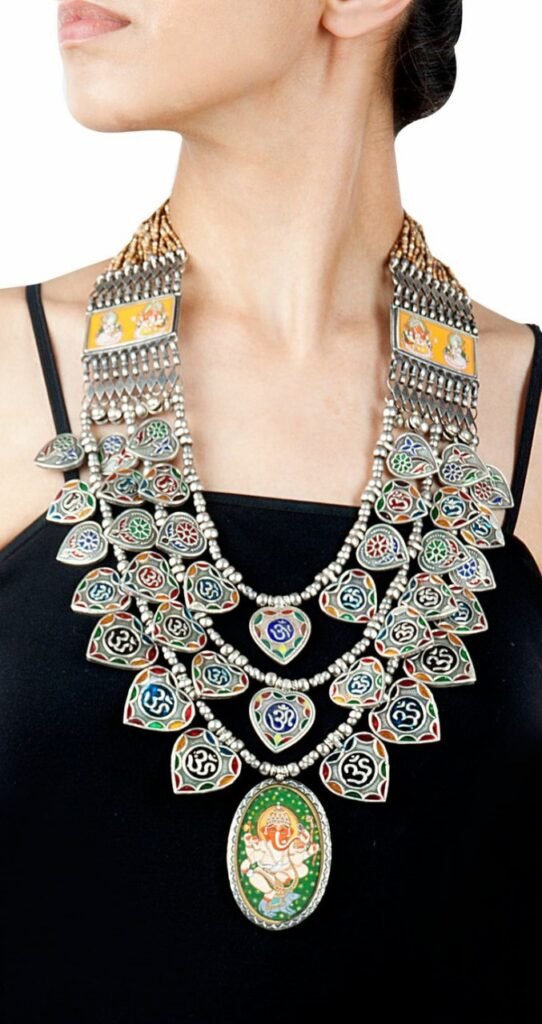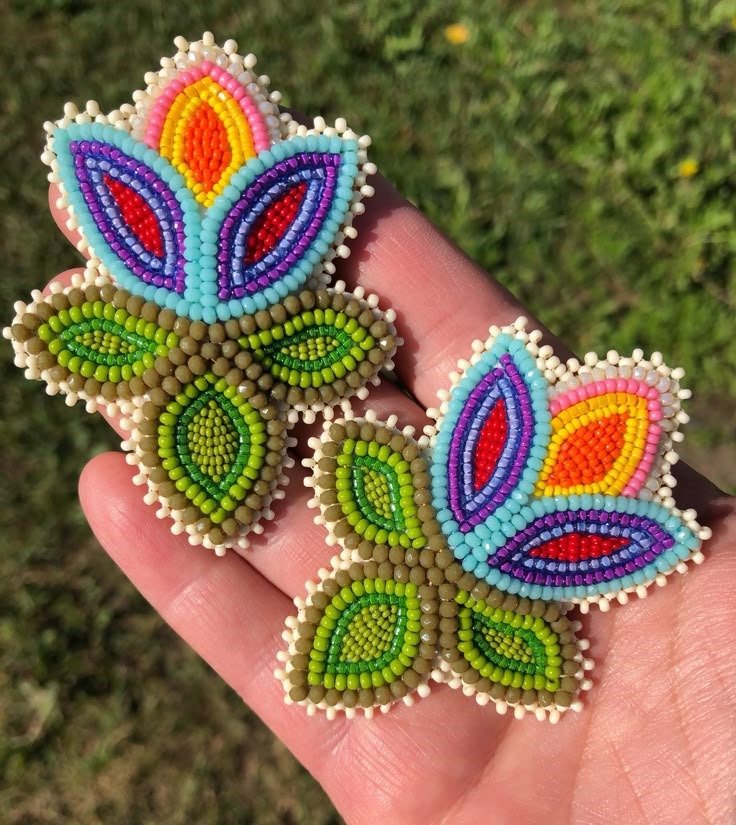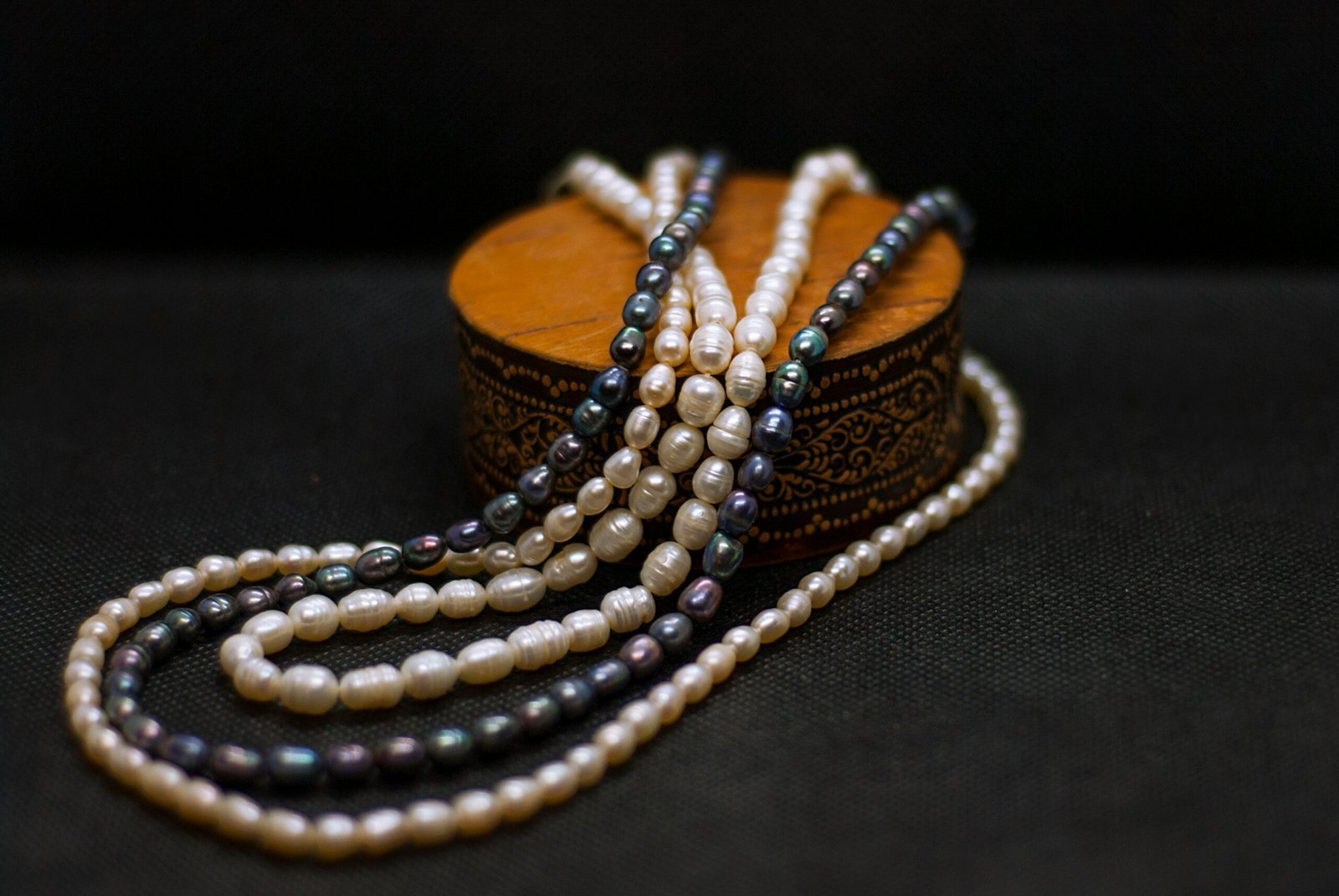The History of Indigenous Beadwork Jewelry
Indigenous beadwork has a long history across North America and beyond. Before glass beads arrived through European trade, Native communities used natural materials like shells, bones, stones, porcupine quills, and seeds. With the introduction of glass beads in the 16th century, beadwork flourished into vibrant patterns and symbolic designs.
Every tribe or community has its own unique beadwork style—geometric patterns, floral motifs, and spiritual symbols often representing clan identities, natural elements, or personal stories.
Cultural Significance of Indigenous Beadwork Jewelry

Indigenous Bead work Jewellery Creations
Beadwork as Storytelling
Each design tells a story—whether it’s about ancestry, seasons, or personal journeys. Wearing Indigenous beadwork jewelry isn’t just about fashion; it’s about carrying a piece of tradition and narrative.
Beadwork in Ceremonies
Many Indigenous beadwork creations are worn during ceremonies, powwows, or spiritual gatherings. They often symbolize protection, respect for ancestors, and connection to the land.
Beadwork as Identity
Patterns, colors, and designs often identify specific tribes or nations. For example, Lakota beadwork emphasizes symmetry and geometric designs, while Ojibwe beadwork is known for its floral motifs.
Techniques Behind Indigenous Beadwork Jewelry Creations

Indigenous Bead work Jewellery Creations
I’ve watched artists at work, and the patience required is incredible. Common techniques include:
- Loom Beading – Using a loom to weave beads into straight-lined designs.
- Peyote Stitch – A hand-sewing technique that allows circular or tubular beadwork.
- Appliqué Beading – Sewing beads directly onto fabric or leather to create detailed patterns.
- Edge Beading – Used to finish borders of jewelry, bags, or regalia.
Each method requires precision, and one small mistake can change the entire pattern.
Personal Reflections on Indigenous Beadwork Jewelry
I once bought a pair of hand-beaded earrings from an Indigenous artist at a cultural fair. What struck me most wasn’t just the beauty of the piece—it was the story she shared about her grandmother teaching her beadwork as a child. Wearing those earrings feels different from wearing mass-produced jewelry. It’s like carrying a tradition that has been passed down for generations.
Why Indigenous Beadwork Jewelry Is Special
- Authenticity – Every piece is handmade, often one-of-a-kind.
- Connection to Nature – Colors and patterns often reflect the land, sky, and animals.
- Spiritual Depth – Designs hold meaning beyond aesthetics.
- Support for Indigenous Artists – Buying authentic beadwork helps preserve culture and provides economic support to Native communities.
How to Style Indigenous Beadwork Jewelry
- Pair bold beaded earrings with neutral outfits to let them stand out.
- Layer beaded necklaces with modern clothing for a unique fusion look.
- Wear beaded cuffs or bracelets as statement pieces.
- Combine traditional designs with casual outfits for everyday wear.
Supporting Authentic Indigenous Beadwork Creations
Unfortunately, mass-produced copies often undermine the value of authentic Indigenous beadwork. To support genuine creations:
- Buy directly from Indigenous artists or verified cultural markets.
- Research the artist and their community.
- Avoid mass-produced “Native-inspired” jewelry from big-box stores.
Conclusion
Indigenous beadwork jewelry creations are more than fashion—they are cultural treasures, living traditions, and works of art. Each bead tells a story of resilience, creativity, and heritage. By supporting authentic Indigenous artists, we not only celebrate beauty but also honor centuries of knowledge and craftsmanship.
If you ever get the chance to hold or wear a piece of Indigenous beadwork, take a moment to appreciate the artistry, patience, and cultural history stitched into every bead.
FAQs About Indigenous Beadwork Jewelry Creations
1. What materials are used in Indigenous beadwork jewelry?
Traditionally, shells, stones, quills, and seeds were used. Today, glass beads, thread, and leather are common.
2. How long does it take to make a beaded jewelry piece?
Depending on size and complexity, it can take hours to several weeks.
3. Are Indigenous beadwork designs the same across all tribes?
No, each tribe has distinct styles, patterns, and symbolic meanings.
4. Can non-Indigenous people wear beadwork jewelry?
Yes, but it’s important to buy authentic pieces respectfully and avoid cultural appropriation.
5. What’s the difference between loom beading and peyote stitch?
Loom beading creates straight patterns, while peyote stitch allows more circular and 3D designs.
6. Why is beadwork important in Indigenous culture?
It preserves tradition, tells stories, and strengthens cultural identity.
7. How can I tell if beadwork jewelry is authentic?
Look for information about the artist, tribe, and creation process. Authentic artists often share the story behind their work.
8. Is Indigenous beadwork considered fine art?
Yes, it is recognized as both fine art and cultural heritage.
9. Can beadwork jewelry be customized?
Many artists accept custom orders, often incorporating meaningful symbols for the buyer.
10. How should I care for beadwork jewelry?
Store it flat, avoid water damage, and handle gently to preserve the beads and thread.
